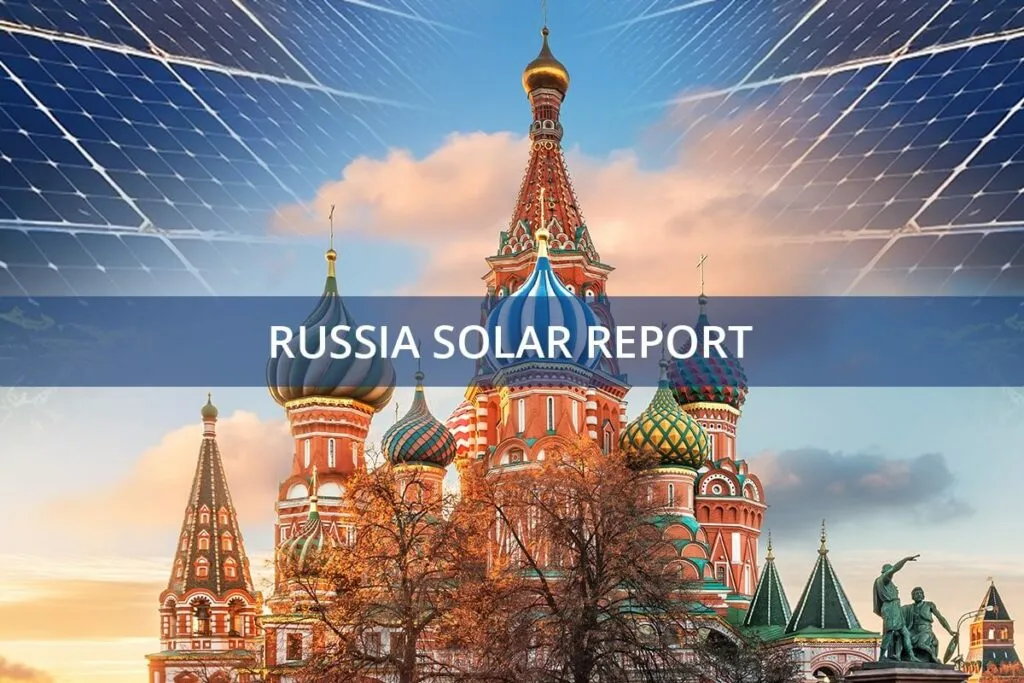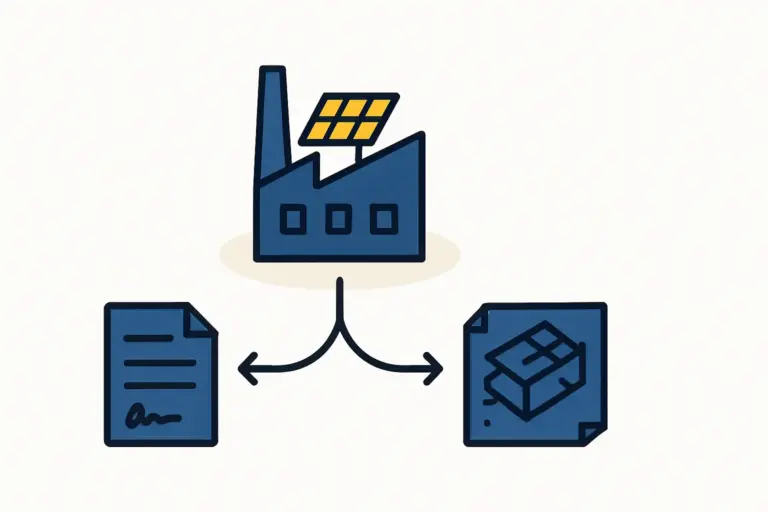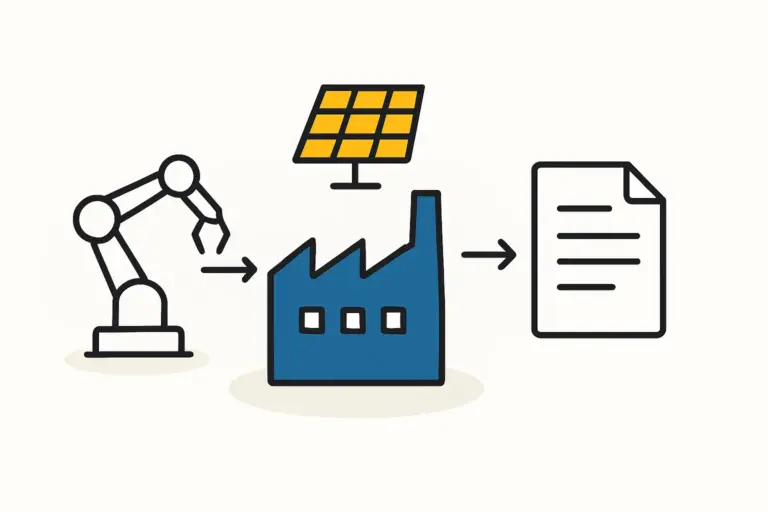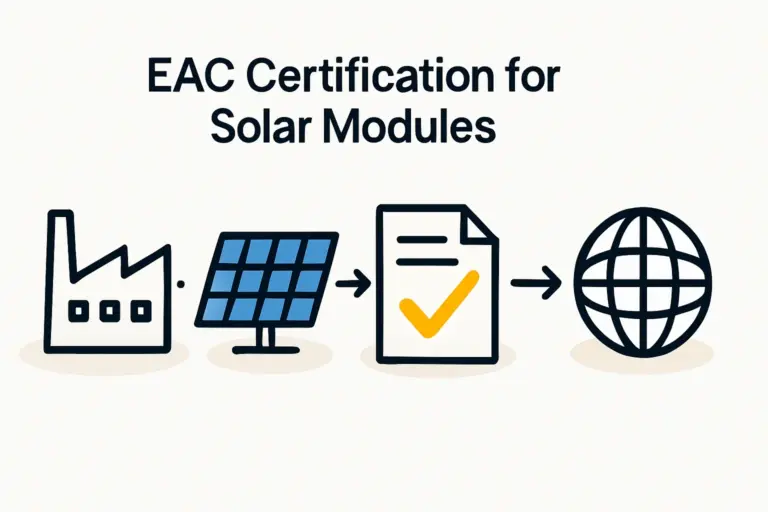Imagine a large-scale solar installation in the vast, remote landscape of Siberia. Standard solar modules, designed for moderate European or Asian climates, are installed.
The first winter brings not just extreme cold but several meters of heavy, wet snow. The immense weight causes micro-cracks in the solar cells and, in some cases, catastrophic failure of the module frames. The project’s output plummets, and warranty claims begin to mount.
This scenario highlights a critical business risk for any investor targeting regions with harsh winters. While solar energy is a global technology, its manufacturing process must be adapted to local environmental challenges.
Producing a standard solar module is one thing; engineering one to withstand 5,400 Pascals of pressure is another entirely. This article details the production line adaptations required to manufacture modules for these demanding, high-value markets.
The Challenge of Extreme Climates: More Than Just Low Temperatures
For solar modules, the combination of extreme cold and heavy snow presents a dual threat that standard products are not designed to handle.
Mechanical Stress from Snow Load
Accumulated snow and ice exert significant pressure on the module’s surface. A standard module is typically certified to withstand a downward pressure of 2,400 Pascals (Pa), equivalent to about 245 kilograms per square meter. In regions like Northern Russia, Scandinavia, or Canada, snow loads can far exceed this, requiring certification for 5,400 Pa (approx. 550 kg/m²).
Material Brittleness at Low Temperatures
Extreme cold alters the properties of materials. Plastics can become brittle, sealants can lose their elasticity, and the differential thermal expansion between glass, metal, and silicon cells can stress solder joints to their breaking point.
Failure to account for these factors during manufacturing leads directly to underperformance, premature degradation, and costly project failures—risks that financiers and developers are unwilling to take.
Key Adaptations in the Solar Module Manufacturing Process
Building a module capable of reliably operating in these conditions requires specific adjustments to the bill of materials (BOM) and certain process steps. While the core machinery remains largely the same, the components and parameters are upgraded.
Frame Design and Material Selection
The aluminum frame provides the module’s primary structural support, but for high snow load applications, a standard design is insufficient.
- Increased Thickness: The frame profile wall thickness is increased from a standard 1.2–1.5 mm to a more robust 1.8–2.0 mm.
- Reinforced Design: The frame design often includes additional internal chambers or supports to prevent buckling under load. The corner keys that hold the frame together must also be stronger.
- Alloy Choice: The specific aluminum alloy must be chosen for its performance at low temperatures to prevent it from becoming brittle.
These enhancements ensure the frame can support the static load of heavy snow without deforming and transferring dangerous stress to the glass and solar cells within.
Glass and Encapsulant Specifications
The front glass is the main barrier against the elements, and its thickness is a critical factor for mechanical strength. While 3.2 mm tempered glass is a common standard, modules for high snow loads may require 4.0 mm glass to provide the necessary rigidity and prevent flexion that could crack the cells.
Equally critical is the encapsulation performed by the laminator. The encapsulant (typically EVA or POE) bonds the glass, cells, and backsheet together. For extreme climates, a high-quality encapsulant that maintains its adhesive properties and flexibility across a wide temperature range is essential to prevent delamination caused by repeated freeze-thaw cycles. This crucial step is explored in more detail in our guide, ‘What is a Solar Module Laminator?’.

The Critical Role of the Junction Box and Sealants
The junction box is the module’s electrical nerve center. In extreme cold, its plastic housing can become brittle and crack, allowing moisture ingress that leads to short circuits and failure.
Manufacturers must select a junction box made from high-grade, low-temperature-rated polymers, a topic we cover in our article on ‘Solar Module Junction Box: Function and Quality Criteria’. The sealant used to affix the junction box and seal the laminate’s edges must also be a high-quality silicone that retains its flexibility and adhesive strength well below freezing, ensuring the module’s IP67 or IP68 rating is maintained for life.
Cell Interconnection and Stringing Adjustments
The process of soldering solar cells together into strings is highly automated. While the core process inside the solar cell stringer machine does not change, as explained in our guide ‘What is a Solar Cell Stringer Machine?’, the quality control parameters must be exceptionally high. Flawless solder joints are essential to withstand the mechanical stress from thermal expansion and contraction. Any microscopic defects in the soldering can propagate into cracks over thousands of temperature cycles, leading to a loss of power.

Certification and Testing: Proving Robustness
Manufacturing a robust module is only half the battle; its durability must be proven through certification. The key international standard is IEC 61215, which includes a mechanical load test.
- Standard Test (IEC 61215): The module is subjected to a cyclical pressure of 2,400 Pa on both the front and back sides.
- Enhanced Test (High Snow Load): For certification in harsh climates, the module must pass a static front-side load test of 5,400 Pa. This test simulates the weight of a heavy snowpack.
Passing this enhanced test is a powerful market differentiator and often a prerequisite for participating in government tenders or securing financing for projects in regions governed by specific building codes, such as those requiring GOST-R certification in Russia. Based on J.v.G. Technology GmbH’s experience with turnkey projects, achieving this certification is a non-negotiable entry ticket to these specialized markets.
Business Implications for New Market Entrants
For an entrepreneur planning to enter the solar manufacturing industry, focusing on a specialized, demanding market can be an excellent strategy.
- Higher Margins: Modules certified for 5,400 Pa command a premium price over standard ones.
- Reduced Competition: Fewer manufacturers are capable of or willing to meet these stringent quality and certification requirements, creating a less crowded market.
- Bankability: Projects using certified high-load modules are considered lower risk, making them easier to finance.
The initial investment in higher-grade materials and rigorous testing is offset by access to profitable, underserved market segments where quality and reliability are valued above minimal cost.

Frequently Asked Questions (FAQ)
How much more does it cost to produce a high snow load module?
The production cost is typically 5–10% higher than a standard module. This increase is almost entirely due to the higher cost of materials: the thicker frame, thicker glass, and potentially higher-grade sealants and junction box.
Can any production line be adapted for these modules?
Yes, a standard production line has all the necessary core machinery. The adaptation is achieved by using a different bill of materials and adjusting process parameters on machines like the laminator and framing station. It is more a matter of process engineering than fundamental equipment changes.
What is the minimum production capacity to justify these adaptations?
This is more of a strategic decision than a technical one. Even a smaller 25 MW solar panel production line, like the ones we profile, can be configured to produce these high-specification modules. The key is aligning production capability with a clear business plan that targets markets requiring and valuing this level of product robustness.
Are these modules also suitable for other extreme environments, like deserts?
While the enhanced durability and sealing are beneficial anywhere, desert environments present different primary challenges: high temperatures, intense UV radiation, and abrasion from sand. While there is some overlap in quality requirements (e.g., robust junction boxes), desert-specific modules would prioritize different features, such as highly UV-resistant backsheets and encapsulants.
Conclusion: From Standard Production to Specialized Excellence
Adapting a manufacturing line for high snow loads and extreme cold does not require reinventing the wheel. Instead, it demands a disciplined focus on material science, process control, and independent verification. By upgrading key components—the frame, glass, and sealants—and validating the final product with rigorous 5,400 Pa load testing, a manufacturer can move beyond the crowded commodity market.
This approach allows new entrants to establish a reputation for quality and reliability, unlocking lucrative projects in demanding climates. For any serious investor, a thorough understanding of the complete solar panel manufacturing process, which we detail in our full guide, is the first step toward building such a specialized and successful enterprise.






